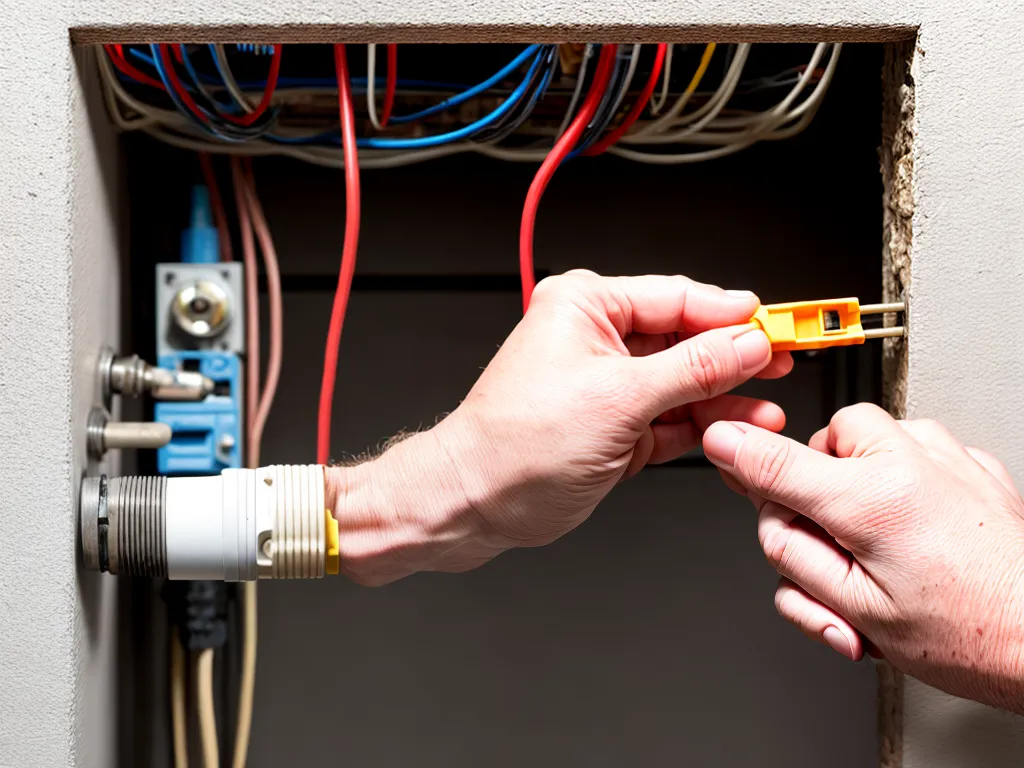
How to Replace an Old Knob and Tube Wiring System
Introduction
Replacing an old knob and tube wiring system in your home can seem like a daunting task, but it is doable with proper planning and precautions. As someone who has gone through this process myself, I will provide a step-by-step guide to walk you through the entire project from start to finish.
Reasons for Replacement
There are several good reasons to replace knob and tube wiring:
- Safety - The old cloth-wrapped wires are prone to deteriorating over time, increasing fire risk. New wiring is safer.
- Insurance - Many insurance companies will not insure a home with knob and tube wiring. Replacing it may be required.
- Resale value - Homes with updated electrical systems sell for higher prices and faster.
- Capacity - Knob and tube wiring lacks grounding and cannot handle higher electrical loads from modern appliances and electronics.
Replacing the old wiring now can prevent problems down the road and make your home safer and more valuable.
Preparation
Proper planning and preparation will make the wiring replacement job go smoothly. Here are some key steps to take before starting:
- Consult an electrician - Have a licensed electrician assess your existing system and provide a cost estimate for replacement.
- Get necessary permits - Check with your local building department on permit requirements for rewiring a home.
- Have utilities marked - Call 811 to have public utilities mark all buried lines on your property before any digging.
- Clear access - Remove any obstructions in the basement, attic, and walls that electricians may need access to.
- Plan for disruption - Rewiring means cutting power at times. Plan accordingly for periods without electricity.
- Budget - Factor in costs for the electrician's labor, materials, permits, repairs, and inspections. The investment is worth it.
Advance planning and preparation will pay off during the wiring replacement process.
Hiring an Electrician
The most important step in replacing knob and tube wiring is to hire a qualified, licensed electrician. This is not a DIY project for an amateur.
When hiring an electrician, be sure to:
- Verify their license - Electricians should be licensed in your state and insured.
- Check references - Speak with previous customers to verify quality of work.
- Get multiple quotes - Compare bids from at least 3 electricians before choosing one.
- Consider experience - Choose an electrician with extensive experience in home rewiring projects.
- Get a detailed bid - The quote should cover the full scope of work, permit fees, materials, labor, and cleanup.
A master electrician or licensed electrical contractor will ensure the wiring job is done properly and passes inspection. Don't risk safety - hire a pro!
Electrical Permit
Once you have an electrician lined up for the project, they can help you obtain the proper permit from your local building department.
The permit application will likely require:
- Property details and address
- Homeowner's name
- Contractor's name and license number
- Description of the complete scope of work
- List of materials to be used
- Estimated project costs
There will be a fee for the electrical permit, which varies by location. The permit process ensures your rewiring project follows all codes and regulations. Your electrician can handle this permitting process for you.
Rerouting Electrical Lines
With permits in place, the hands-on work of replacing the old wiring can begin. The general process will involve:
- Disconnecting old wiring at main electrical panel
- Running new wire through walls and ceilings from panel to outlets and fixtures
- Removing old knob and tube wiring as new wiring replaces it
- Installing new outlets, switches and junction boxes
- Connecting new GFCI outlets in kitchen, bathrooms, laundry and basements
- Connecting copper grounding wires and rods
Your electrician will take care of rerouting all the necessary electrical lines throughout the house during the rewiring.
Inspection & Sign Off
Once the new electrical system is installed, the local building inspector must come out and approve the new wiring and connections before the walls get closed up.
The inspector will check for:
- Proper wire sizes and circuit breaker amperages
- Adequate number and placement of outlets/switches
- Only approved materials used
- Grounding system in place
It's common for minor issues or changes to be needed after the inspection. Your electrician will make any corrections, and have the inspector return to sign off on the project. This final approval is important documentation and assures a safely rewired home.
Restoring & Cleaning Up
After the inspector signs off, your electrician can button up the rewiring job by:
- Closing any holes or gaps opened up in walls and ceilings during the wiring process
- Installing trim plates and covers on any junction boxes and conduit
- Testing all outlets, switches, fixtures to ensure proper function
- Cleaning up thoroughly - removing all old wiring, materials, tools when finished
- Hauling away all debris from the job site or offering cleanup assistance
Restoring surfaces and cleaning up properly after all the rewiring work is completed will allow you to settle back into your home without any lingering mess or damage.
Conclusion
While rewiring an older home with knob and tube is a major undertaking, having it done by qualified electricians will make the process go as smoothly as possible. Proper planning on the front end, careful installation work, getting necessary inspections, and thorough cleanup at the end are all key to successfully replacing that outdated, hazardous old wiring. The investment of time and money is well worth it for the safety and value it adds to your home. I hope this outline gives you a clearer picture of what to expect during a full electrical rewiring project. Let me know if you have any other questions!